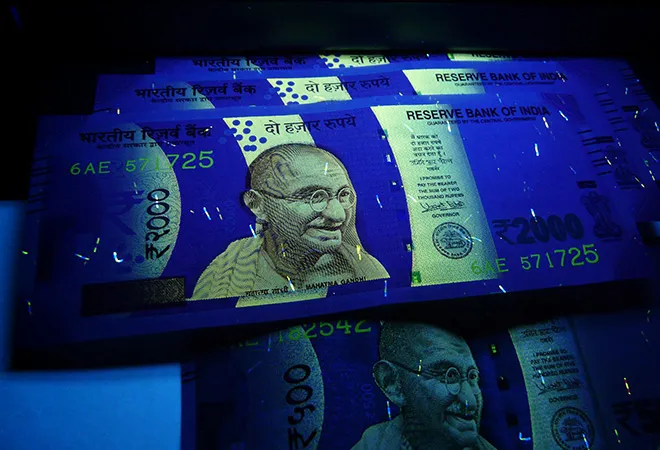
“… we take a keen interest in digital innovation and in the changing expectations of money users, and we are refining our thinking on CBDC.” — Yves Mersch, Member of Executive Board and Vice Chair of Supervisory Board, European Central Bank, 11 May 2020
Globally, the (digital) payment space has seen dramatic innovations in the last decade. Multiple forms of virtual money to independent cryptocurrencies were invented during this period. It could be argued that all this was trigged by the crash of 2008, which challenged our trust in the traditional system of money. In August 2008, the domain bitcoin.org was registered, and later in that year in October, a paper titled, Bitcoin: A Peer-to-Peer Electronic Cash System, was published by Satoshi Nakamoto, which trigged the movement towards the proliferation of cryptocurrencies. In a different part of the world, in 2007, M-Pesa was launched by Vodafone in Kenya, enabling those with no access to the formal banking system to make digital payments using a mobile phone. The next logical step in this progression seems to be a Central Bank Digital Currency (CBDC). This article attempts to understand crucial aspects of CBDC and its relevance for India, with a particular focus on retail CBDC.
It could be argued that all this was trigged by the crash of 2008, which challenged our trust in the traditional system of money.
The shift from public fiat money to electronic and private money has opened a plethora of opportunities. At the same time, it has also posed challenges to the definition and traditional form of money, the role of central banks, and financial intermediation model. On 12 March, Bank of England published a discussion paper titled, Central Bank Digital Currency (CBDC): Opportunities, Challenges, and Design, while on the other side of the Atlantic, two Congressional Bills pushed for ‘Digital Dollars’. A month before that, on 11 February, Reserve Bank of India, in its monthly bulletin, published an article elaborating on the role of distributed ledger technology — blockchain — with a mention of CBDCs.
According to the Bank for International Settlements (BIS), there isn’t a consensus on the definition of a Central Bank Digital Currency, and it's fast-evolving. The CPMI-MC Report (2018) has described it as “… a central bank liability, denominated in an existing unit of account, which serves both as a medium of exchange and a store of value.” Expanding the scope of CBDC, the Bank of England described it as, “…an electronic form of central bank money that could be used by households and businesses to make payments and store value. This wider access to central bank money could create new opportunities for payments and the way the bank maintains monetary and financial stability.”
In the survey of 66 central banks, which included the RBI, conducted by the BIS in 2018 and late 2019, 80 percent central banks reported that they were actively engaged in research, experiments, or development work related to CBDC. The survey indicated that 40 percent of central banks have progressed from research to experiments or proof-of-concept, whereas another 10 percent of respondent central banks have developed pilot projects. Financial inclusion, domestic payment efficiency, and payments safety are significant motivations for central banks to consider CBDCs in emerging market economies. On the other hand, in advanced economies, the significant motivations were financial stability, payment safety, and robustness.
The shift from public fiat money to electronic and private money has opened a plethora of opportunities. At the same time, it has also posed challenges..
How CBDC is different?
The following table provides an idea of how CBDC compares with existing form of fiat money and cryptocurrency.
| Characteristics |
Fiat currency |
Cryptocurrency |
CBDC |
| Issued by |
Central Bank |
Private entities |
Central Bank |
| Backed by |
Assets such as government securities |
NA |
Assets such as government securities |
| Legal medium of exchange |
Yes |
No |
Yes |
| A store of value |
Yes |
Yes |
Yes |
| Determination and fluctuation of value |
Monetary policy, trade and market |
Only market |
Monetary policy, trade and market |
| Intermediary institutions |
Required |
Not required |
Not required |
| Cost of money |
High — printing and distribution |
Mining cost — very high |
Low |
| Security and maintenance |
High |
Low |
Low |
| Traceability |
Low |
High |
High |
| Payments and settlement system |
Limited acceptability |
Near universal acceptability |
Universal acceptability |
| Monetary policy |
Slower transmission |
NA |
Possibility of near-real time transmission |
| Financial stability |
Stable — rush to cash |
Very unstable |
Difficult to answer with existing empirical evidence |
| Scalability |
Low |
High |
High |
| Privacy |
Not a concern |
Not a major concern |
Normative, but can be a major concern |
While evaluating the relevance of CBDC for India, three considerations are of utmost importance — the impact on the current existing payment system, financial intermediation, and monetary policymaking. Two other factors are critical, one being privacy, which is a matter of societal norms, and the second being cybersecurity, which is a matter of robust technological infrastructure.
Payment system
People may exercise choice to hold digital sovereign money as an alternative to cash. This can enable payments and transfers to take place directly in risk-free central bank money, and in real-time to businesses and individuals. There could also be benefits of having a CBDC for wholesale and interbank payments; for example, it could facilitate faster settlement and extended settlement hours. Implementation of CBDC through the existing structure of commercial banks and payment service providers (PSP) would require considerable investments to set up a suitable infrastructure, redesign network, and integrate it with currently existing technologies.
India is one of the few countries with a robust legal framework that empowers the central bank to regulate and supervise payment systems. The payment system regulated by the Reserve Bank of India (RBI) is not just a safe and secure but also efficient fast and affordable. For CBDC to be operationally effective, RBI would have to develop a separate set of regulations. Policies around the remuneration of private intermediaries providing value-added services would need thorough analysis.
India is one of the few countries with a robust legal framework that empowers the central bank to regulate and supervise payment systems.
Financial intermediation
The introduction of CBDC would have wide-scale implications on the traditional structure of the banking business and financial intermediation model. Households and firms would have a choice to decide between banking deposits or digital currency holdings, possibly directly at the central bank. Flight from commercial bank deposits to CBDC will shrink the balance sheet of commercial banks as they will lose out on deposits (liabilities) and reserves (assets). Commercial bank deposits may face stiff competition from CBDCs as a potential group of people, and firms would prefer moving existing deposits to CBDCs. It could result in reducing the need for state guarantees to the bank liabilities. Furthermore, due to the intense competition on retail transactional services, banks and other financial entities would be pushed to increasingly rely on wholesale or even overseas funding, which is likely to be expensive and more unstable. This would constitute a considerable structural change for the banking sector, which could see their intermediation margins eroded and have consequences for credit provision, thereby posing a significant challenge to the sustainability of current bank business models. Credit risk agencies might play a bigger role in the world dominated by CBDCs, as the ability to offer narrowly targeted credit risk-based financial services might be more feasible.
The Indian banking sector is one of the largest networks of banks in the world, catering to more than 80 percent of India’s population. It consists of 18 public sector banks, 22 private sector banks, 46 foreign banks, 56 regional rural banks, 1,542 urban cooperative banks, and 94,384 rural cooperative banks. A general-purpose CBDC has the potential to disrupt this intermediary network. Thus, RBI must assess thoroughly and adopt a cautious approach as it would have wide-scale ramifications on financial inclusion and employment.
Monetary policy
According to BIS CPMI-MC Report (2018), CBDC does not alter the basic mechanics of monetary policy; rather, it has the potential to enable timely transmission of monetary policy. CBDC, as a digital alternative, would help pass over any changes in the bank rate faster to the households and firms. Thus having a CBDC makes more systematic and transparent monetary policy actions, thereby facilitating the effectiveness of transmission mechanisms and, at the same time, granting the central bank greater control over the general financial conditions in the economy and, therefore, over aggregate demand.
CBDC, as a digital alternative, would help pass over any changes in the bank rate faster to the households and firms.
But these benefits would have to be weighed against risks, such as the potential effects of disintermediation of the banking sector on credit provision.
Conclusion
Maximising the effectiveness of fulfilling the essential functions of fiat money should be the primary objective of CBDC. India has recently witnessed a significant transition towards the digital economy. With deeper internet penetration and ease of transactions, digital payment in India increased by 55 percent in 2018. RBI is also aiming at ‘cash-lite’ economy with its vision document titled, Payment and Settlement Systems in India: Vision 2019–2021. CBDC appears to be the next logical step in this transition. However, India needs to explore, engage, and experiment cautiously before venturing into the uncharted territory of digital currencies.
The views expressed above belong to the author(s). ORF research and analyses now available on Telegram! Click here to access our curated content — blogs, longforms and interviews.




 PREV
PREV



